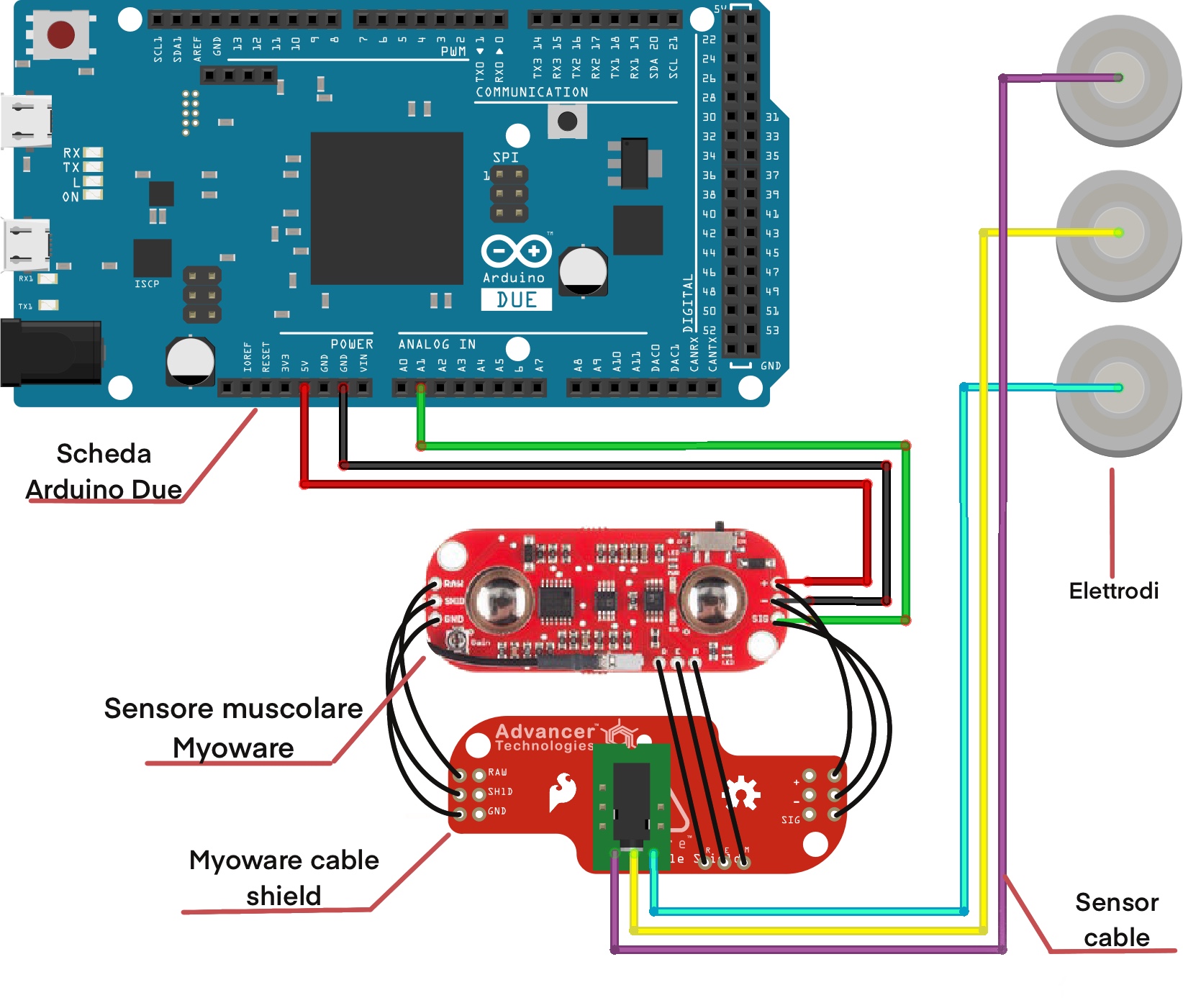MyoWare EMG Sensor
All-in-one analog signal processing (amplification, rectification, integration) and direct signal output.
Studying and processing electromyographic signals to correlate muscle activation with applied force during upper limb exercises.
The project analyzes EMG signal pathways from muscles to microcontroller, including amplification, filtering, digitization, and visualization. It aims to understand how muscle contraction intensity can be monitored using MyoWare sensors, Arduino Due, and Processing-based real-time plotting.
Status: Completed
All-in-one analog signal processing (amplification, rectification, integration) and direct signal output.
Real-time analog-to-digital conversion for high-resolution signal acquisition.
Extraction of features like RMS, ARV, zero-crossings, slope changes, and variance.
Biceps brachii, triceps brachii, and flexor carpi ulnaris.
The system includes surface electrodes connected to a MyoWare sensor, which feeds preprocessed analog signals to an Arduino Due. Data is transmitted via serial to a PC running Processing, where it is visualized in real time for analysis.

The collected signals showed clear activation patterns during weightlifting tasks. Feature extraction confirmed increased EMG envelope amplitude with applied force, though linear correlation was not strictly observable. Baseline noise remained within 1–3.5 mV, and signal integrity was validated through frequency and offset inspections.
MyoWare EMG sensors, surface electrodes, analog pre-processing.
Arduino Due with 12-bit ADC for real-time digitization and signal sampling.
Custom interface built in Processing for live signal plotting and monitoring.
Low-pass filters, differential amplification, baseline noise analysis.
Download the full thesis document for details on the hardware, signal analysis methods, and experimental validation.
Download Thesis PDF